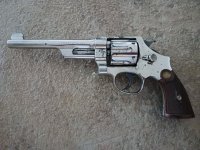Have had Flitz recommended to me for my nickel triple-lock. Has some finish issues, and is of course more than 100 years old.
Does Flitz have more than one product? Here is a pic of the gun and the Flitz.
Is this the right stuff?


Does Flitz have more than one product? Here is a pic of the gun and the Flitz.
Is this the right stuff?
Attachments
Last edited:




